LIKE MANY GREAT IDEAS, the National Marine Sanctuary System was forged amid disaster. On the morning of January 28, 1969, workers drilling a new well on Union Oil’s Platform A had a blowout, spilling 3 million gallons of crude oil into the Santa Barbara Channel, blackening popular beaches and killing thousands of seabirds and countless fish and marine mammals. President Richard Nixon, who grew up in Southern California, flew in to walk along the tar-ball-lined shores of his home state, channeling public outrage that inspired grassroots environmentalists and their movement for stronger stewardship of the nation’s ocean resources.
It took another four years, but in 1972 Nixon signed a suite of environmental legislation that forms the foundation of today’s conservation efforts. These laws include the Clean Air Act, Clean Water Act, Endangered Species Act, Marine Mammal Protection Act, Coastal Zone Management Act, National Environmental Policy Act, the Magnuson-Stevens Fishery Conservation and Management Act, and, of course, the National Marine Sanctuaries Act.
“The clean air and water we enjoy today,” said Office of National Marine Sanctuaries Director John Armor, “the species that have recovered from historically low population levels, the preserved public access to beaches and coastal waters, the processes that inform and solicit input from the public on projects having an impact on their communities — these are only some of the benefits we can trace back to those historic laws.”
A century earlier, Americans were introduced to the idea of setting aside special places for the enjoyment and pleasure of the people with the establishment of Yellowstone National Park. The creation of modern parks became a powerful tool for conserving and protecting valuable places. As more terrestrial places were set aside for protection, so too were national seashores and wild and scenic rivers. Three years after the ink dried on Nixon’s signature, the underwater resting place of the shipwrecked Civil War ironclad USS Monitor became the first national marine sanctuary in the U.S.
Today, under the umbrella of the National Oceanic and Atmospheric Administration (NOAA), the system has grown into a nationwide network of 15 national marine sanctuaries and two marine national monuments that conserve more than 620,000 square miles of spectacular ocean and Great Lakes waters, an area nearly the size of Alaska. In October, the system will celebrate its 50th birthday.
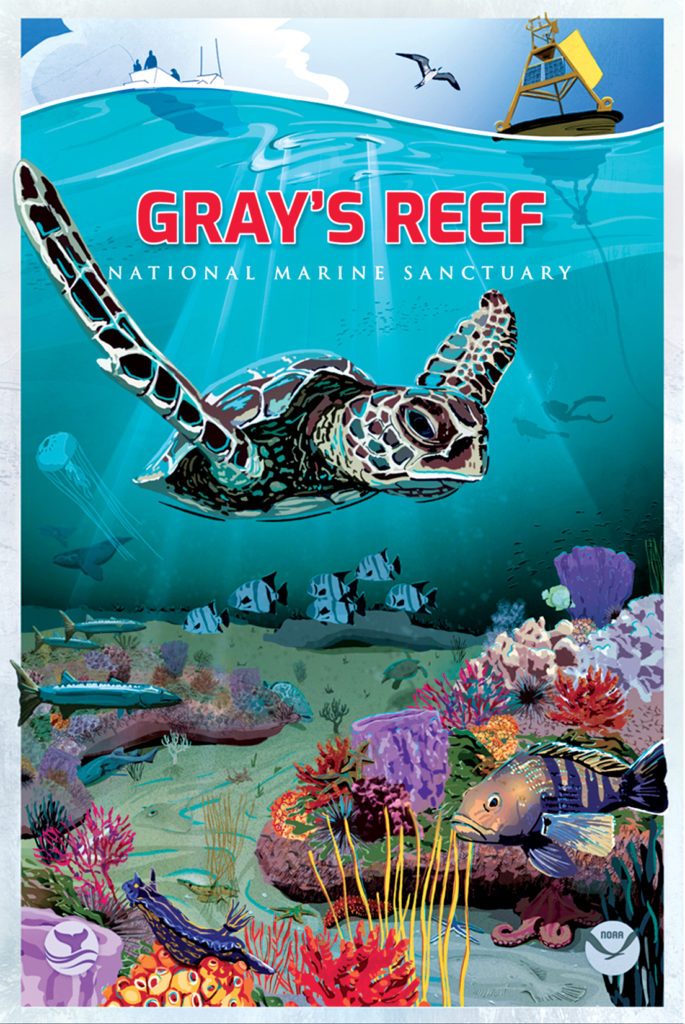
Science and
Maritime Heritage
From lush seagrass beds to slow-growing, deep-sea corals, the habitats that sanctuary waters protect vary greatly from place to place. While Mallows Bay near the Potomac River guards the largest shipwreck fleet in the Western Hemisphere, Stellwagen Bank near Boston preserves abundant whale-watching habitats, and Monterey Bay nurtures epic kelp forests. Flower Garden Banks National Marine Sanctuary (FGBNMS) in the Gulf of Mexico is home to the world’s northernmost coral reefs. Each site has its own unique history and purpose.
A tenet of their creation requires sanctuaries to maintain natural biological communities and, as stated in section 301(b) of the National Marine Sanctuaries Act, “protect and, where appropriate, restore and enhance natural habitats, populations, and ecological processes.” Many sites serve as a proving ground for new approaches to restoring and managing marine ecosystems in the face of climate change and other threats. Mission: Iconic Reefs is a massive collaborative effort to restore almost 3 million square feet of reef at seven iconic sites within the Florida Keys National Marine Sanctuary (FKNMS) to a sustainable state. In California, the Greater Farallones National Marine Sanctuary and Greater Farallones Association are implementing strategies for kelp forest restoration, monitoring, research, and public engagement.
“The reefs are home to this community. They are part of our way of life,” said Sarah Fangman, FKNMS superintendent. “We hope the Mission: Iconic Reefs effort can be beneficial not just in the Florida Keys but also in other reefs around the world. We hope we can give back and pay it forward.”
Sanctuaries are a natural destination for members of the dive community, so much so that it is impossible to estimate how many dives occur each year within their boundaries. “Sanctuaries are not meant to be static displays in a museum,” Fangman said. “They’re meant to be enjoyed by the world. Our job is to manage compatible uses so that these resources are here for generations to come.” There are regulations that divers must follow inside sanctuary boundaries, mostly around collecting natural and cultural items, which is often prohibited or allowed only by permit.
National marine sanctuaries are also great places to research and test approaches for mitigating human impacts on wildlife. Since 2007 NOAA has worked to better understand how ship strikes impact endangered whale populations in national marine sanctuaries on the West Coast. This information led to NOAA creating the Blue Whales and Blue Skies initiative, where they worked with major shipping companies that voluntarily reduced their vessel speeds in critical areas to no more than 10 knots. The 2020 vessel speed reduction program cut more than 700 tons of smog-forming emissions and saw a 35 percent decrease in ship strike risk.
This innovative mindset spawned the development of a mooring buoy system in the Florida Keys that allows divers and snorkelers to explore legendary coral reefs without launching dangerous anchor throws. Almost 500 buoys are anchored at the most popular dive spots in the Keys, ready for boats to safely moor above the delicate corals. Many commercial dive operators who use the buoys are part of a sanctuary-led Blue Star certification that promotes responsible and sustainable use of the ecosystem, including debris clean-up dives that remove discarded traps, netting, and fishing line.
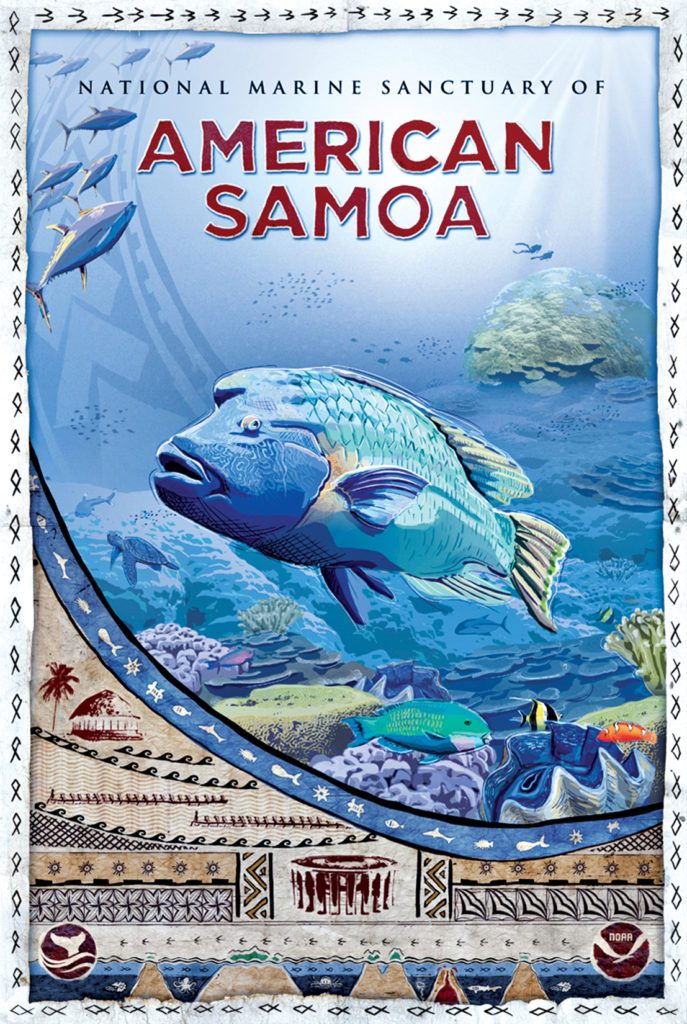
A Connection to
Culture and Communities
In addition to protecting natural resources, national marine sanctuaries also preserve cultural histories such as shipwrecks and heritage artifacts and locations. Currently, there are 1,211 known shipwrecks protected throughout the sanctuary system, with thousands still waiting to be discovered in these waters. The program focuses on several key research areas such as maritime history, site inventory and assessment, and maritime cultural landscapes.
The people who live and work in the communities surrounding national marine sanctuaries care deeply about these places. Sanctuaries have always been tightly interwoven with the local communities around them, but perhaps the most significant change to the system came in 2014 when the new sanctuary nomination process was implemented, leading to a community-driven way to decide which special underwater places to consider for sanctuary designation. Through this new process, the Mallows Bay–Potomac River National Marine Sanctuary officially became designated in 2016, followed by the Wisconsin Shipwreck Coast National Marine Sanctuary in 2021.
The national marine sanctuary system will surely continue to grow. Currently, five nominated sanctuaries are in the inventory NOAA is considering for designation, including Chumash Heritage National Marine Sanctuary in California. The proposed Lake Ontario National Marine Sanctuary is currently in the process of designation, and the public was recently invited to submit comments on the draft management plan.
In addition to adding new sanctuaries to the system, several sanctuaries have seen boundary expansions over the years, such as Thunder Bay, Cordell Bank, and Greater Farallones in 2015, and FGBNMS in January 2021. Monitor National Marine Sanctuary was also proposed for expansion in 2016 to protect the final resting place for those lost in World War II during the Battle of the Atlantic.
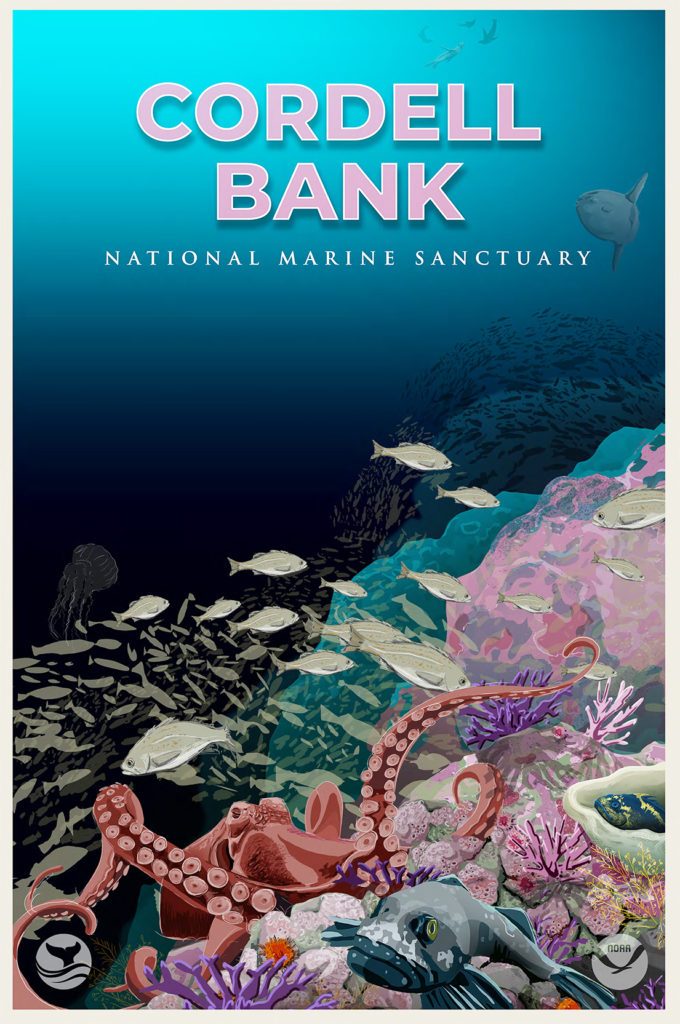
Save Spectacular
Under the headline banner Save Spectacular, the sanctuary system is in the midst of a year-long celebration leading up to the 50th anniversary in October, with a myriad of activities that even include a stamp series from the U.S. Postal Service. “From the very beginning, the enthusiasm, creativity, and can-do spirit of our staff, partners, and volunteers have allowed the sanctuary system to become a global leader in advancing marine protected areas as valuable conservation tools for our planet,” Armor said in announcing the anniversary celebration. “As we look at the many issues facing our ocean and coasts in the next 50 years, I’m reassured that our staff and those who work with us will continue to meet these challenges and ensure that sanctuaries continue to thrive for future generations.”
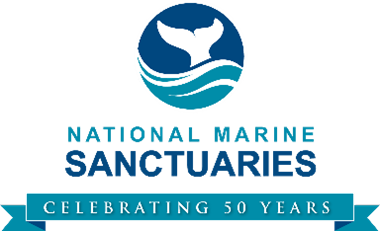
- American Samoa (Pacific)
- Channel Islands (Pacific)
- Cordell Bank (Pacific)
- Florida Keys (Atlantic, Gulf of Mexico)
- Flower Garden Banks (Gulf of Mexico)
- Gray’s Reef (Atlantic)
- Greater Farallones (Pacific)
- Hawaiian Islands Humpback Whale (Pacific)
- Mallows Bay (Atlantic)
- Monitor (Atlantic)
- Monterey Bay (Pacific)
- Olympic Coast (Pacific)
- Papahānaumokuākea Monument (Pacific)
- Rose Atoll Monument (Pacific)
- Stellwagen Bank (Atlantic)
- Thunder Bay (Great Lakes)
- Wisconsin Shipwreck Coast (Great Lakes)
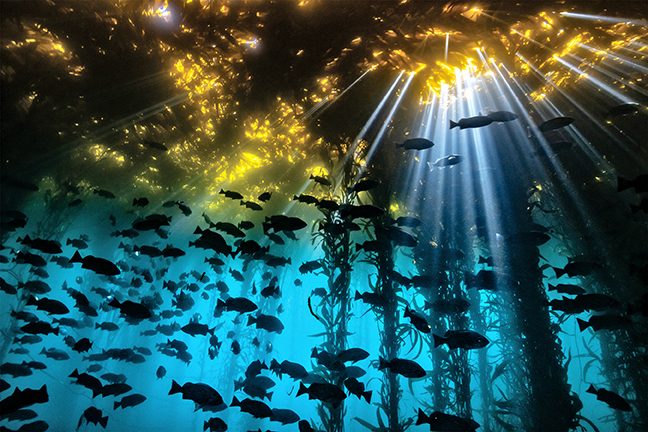
Photo: Jon Anderson
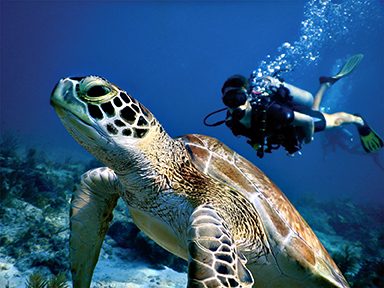
Photo: Olivia Williamson
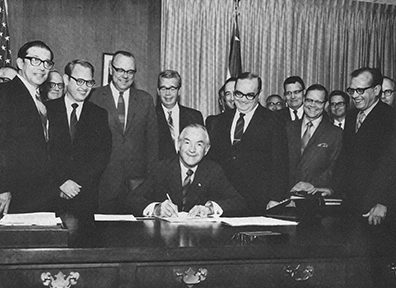
Photo: Courtesy NOAA
Dive the
Sanctuaries
from Virtually
Anywhere
Divers know better than anyone the wonder national marine sanctuaries hold because they can immerse themselves in the splendor. But you can also enjoy the experience without getting wet. NOAA’s Office of National Marine Sanctuaries has cataloged its underwater resources with 360-degree videos that allow users to swim along for the ride with top to bottom control of the view. The series follows playful sea lions in Monterey Bay, sea turtles in Hawai‘i, and coral outplant practitioners in the Florida Keys, among others. The videos and static, 360-degree images are within reach at sanctuaries. noaa.gov/vr/.
© Alert Diver — Q2 2022